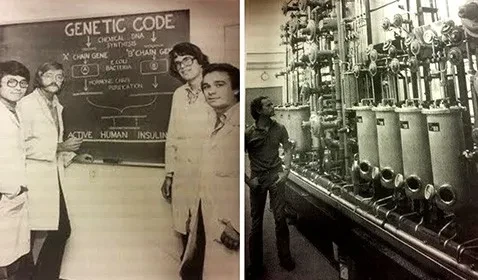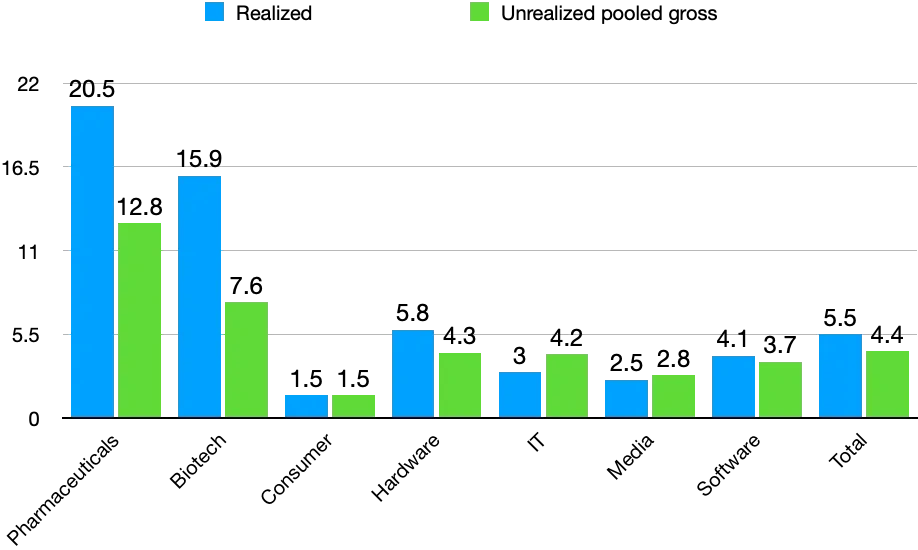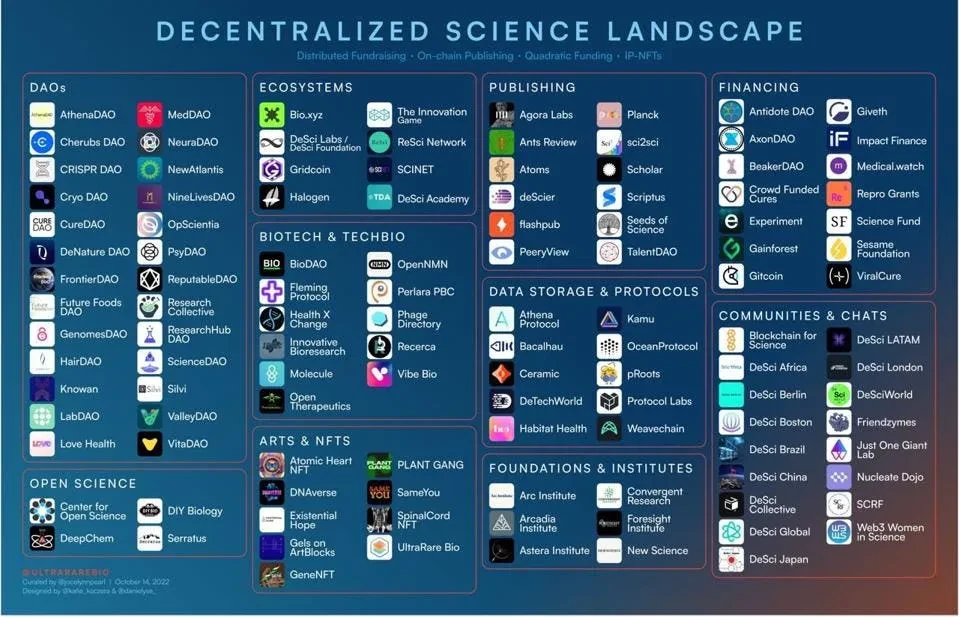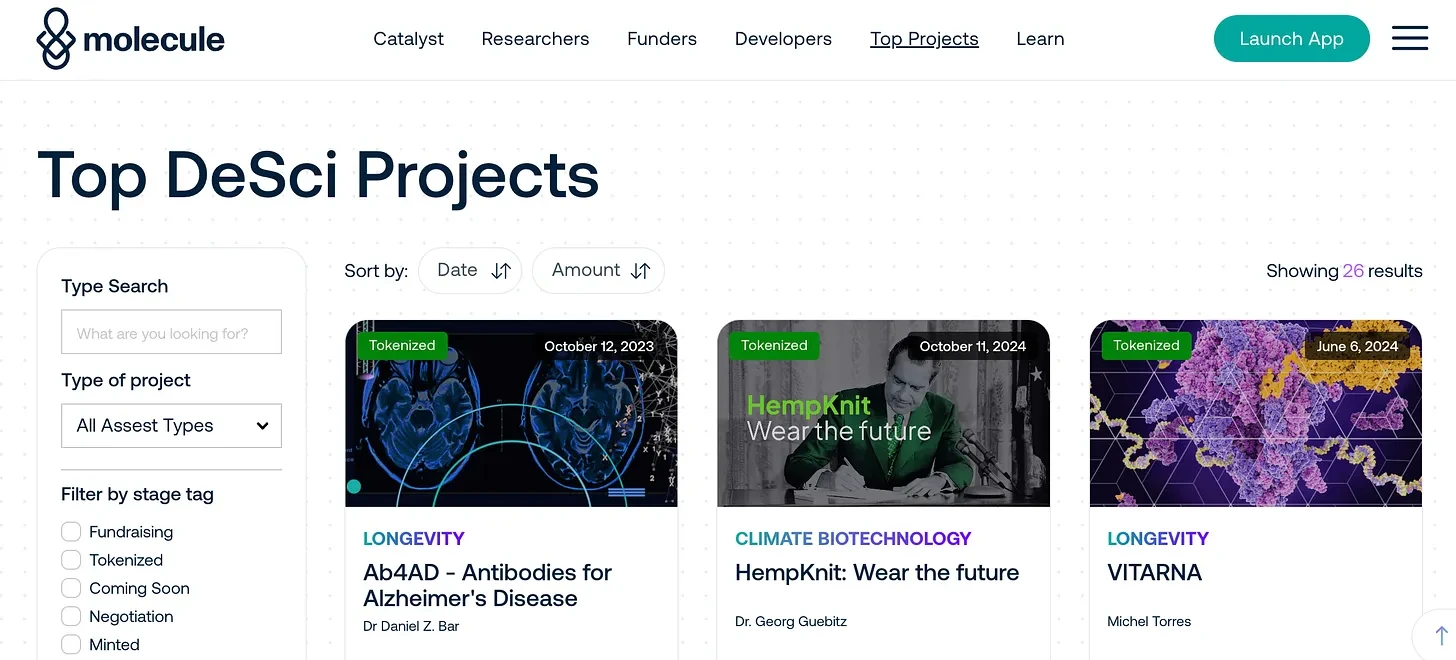This article is also available on Ailurus website
Life sciences and biotechnology have long driven transformative advances, from life-saving treatments to precision diagnostics, from detergent enzymes in laundry to bacteria that turn carbon into fabric. In a talk I gave at Synbiobeta 2025, I told a story about a species that could significantly lower the temperature of the entire planet.
The power of living things is magical. It is the technology of all things .
However, despite the industry’s bright prospects, traditional financing mechanisms often fail to support early disruptive ideas, and on the other hand, it also hinders investors’ opportunities to make money from these potential innovations.
Hoy, Bio Protocol (BIO) has just been listed on Binance with ETH, Solana, and Base through Binance’s new coin pool . For those who are not familiar with the world of criptocurrency, Binance is now the world’s largest cryptocurrency exchange platform, with a daily trading volume of more than $11 billion.
Taking Bio Protocol as an example, can blockchain-based financing models provide an alternative that democratizes access to capital, incentivizes collaboration, and drives more impactful discoveries?
The Challenge of Conservatism in Biotech Financing
The historical evolution of biotech financing, from post-World War II research funding to the venture capital boom driven by landmark successes such as Genentech , has definiciónned the funding model for biotech. Key milestones include:
-
Research funding: Academic and startup labs receive funding to develop new technologies.
-
Venture Capital Partnerships: Venture capital helps scale up lab innovations into intellectual property (IP) assets.
-
Pharmaceutical Collaborations: Strategic partnerships support large-scale manufacturing and distribution.
-
IPO: Companies seek public market financing to sustain long-term development.
Much of the credit for this can be attributed to Genentech and its peers. Genentech ’s early success with human insulin and its famous collaboration with Eli Lilly demonstrated the potential for huge financial returns in the biotech industry. It took them only about 4 years from founding to going public, which was the largest IPO at the time until Apple went public later in 1980. After that, the entire revolution in biologic drugs and therapeutics began.
Historical images of Genentech and insulin production
This model works very well because biotech is often very powerful and creates a lot of wealth. In the figure below, Bruce L Booth y Bijan Salehizadeh demonstrated in a 2011 article in Nature Biotechnology that biotech investments significantly outperform the technology industry (IT, software, media, hardware, etc.).
Model reproduced from Booth Salehizadeh paper
Además, its effect is even better than the Internet bubble in recent years .
Image adapted from Bay Bridge Bio
However, while this model is undeniably transformative and positive in many ways, it has turned itself into a dynamic attractor, a local minimum, and fostered conservatism throughout the industry.
The success of models like Genentech has led to a growing trend of prioritizing “blockbuster” therapies and established models targeting large markets. This rigidification has raised the bar for non-conventional biotech ventures and marginalized projects outside of therapeutics or with disruptive business models. Now, the default definition of a “biotech company” is a therapeutics development company of one kind or another. Whoever works in other fields must come up with new names for them, such as “techbio” and so on.
Even established giants can’t escape this gravitational pull. In 2000, Novo Nordisk ( the company behind the recent diet pills Ozempic and Wegovy) had to spin off Novozyme , which made more than 50% of the detergent enzymes in its laundry detergent. In 2023, Johnson Johnson (JJ) spun off its consumer products (including well-known brands such as Band-Aid, Tylenol, and Johnson’s Baby Powder) into a new company called Kenvue .
Furthermore, this emphasis on binary outcomes and non-recurring revenue makes valuations challenging, keeping biotech in a boom-and-bust cycle.
In the long run, this is not conducive to the development of the bio-related economy. Unlike the technology industry, no biotech company has a valuation of $1 trillion, and no biotech company established after 1990 has a valuation of $100 billion. Only Moderna went bankrupt due to the COVID-19 pandemic.
Over the past 10 years, the Nasdaq Biotechnology Index has significantly underperformed the Nasdaq 100 and even worse than the SP 500.
Clearly, a new model was needed!
Decentralized Finance: The Power of Blockchain
Blockchain and Web3 technologies introduce new paradigms for resource allocation and community engagement. Platforms such as Bio Protocol (not a scientific journal , but a new web3 platform) leverage decentralized finance (DeFi) principles to create novel financing ecosystems. Here are some key elements:
-
Simbólico-based incentives: Participants can stake tokens (e.g., BIO) to fund specific research initiatives and receive rewards based on project outcomes.
-
Community Governance: Rather than relying solely on a centralized entity, decentralized autonomous organizations (DAOs) allow stakeholders to vote on funding decisions.
-
Transparency and Security: Blockchain’s immutable ledger ensures transparent and secure flow of funds and research milestones.
-
Incentivizing Participation: By holding and staking BIO tokens, community members can participate in funding groundbreaking research and share in potential benefits.
-
Collaboration with Institutions: BIO promotes collaboration with research institutions, enabling laboratories to access decentralized funding without being limited by traditional bureaucratic barriers.
Excerpted from John Camposs column in Forbes
This approach not only democratizes funding, but also aligns the interests of researchers, funders, and the broader community.
Por ejemplo, Molecule, an early innovator in the decentralized science (DeSci) space, has demonstrated how blockchain-based models can be used to fund scientific projects. Their work with researchers in fields such as neurodegenerative diseases and synthetic biology has led to multiple funded projects that would have been difficult to obtain support through traditional funding channels.
I know this may not sound very serious or scientific at first. After all, cryptocurrencies have been very popular.
Still, it may have potential. The timing may be good. Cryptocurrency has grown into a large enough financial ecosystem that it is now moving higher; and the biotech market is at a relatively low level globally, so people may be more open to it now.
This could at least provide some alternative liquidity for early-stage biotech innovation. In my opinion, the early stages are actually the hardest time for innovation in any non-common-sense drug asset. For example, if you are not working on an ambitious idea for a brain-computer interface, or like us, biological supercomputing , it may be more difficult to convince traditional VCs to invest enough money in that than for a traditional therapeutic biotech. And today, it is still almost impossible to start such a moonshot biotech company.
As soon as you pass a key milestone and gain traction, given the history of how profitable biology can be, I believe there will be traditional VC and equity markets to take over for later stage funding.
This would also allow individual investors to participate in biotech innovation and potentially benefit early. I mean, many publicly traded biotech companies are still in RD. In principle, if they can be publicly traded, why cant any biotech company be?
Before Robert Swanson , no one had a clear idea of how to commercialize genetic engineering. The model established today was also a crazy idea at the time. So why not use cryptocurrency?
Learn more about some projects
At Molecule we can learn how to fund future life science projects. Here you will find some projects that are very serious, just like what you would see in a research grant application.
Here are some notable examples that I personally like:
Ab 4 AD : Dr. Daniel Z. Bar at Tel Aviv University is developing antibodies for Alzheimers disease. I would say this is a fairly mainstream area of research, with 2 antibodies approved in the US for early-stage Alzheimers disease against beta-amyloid, and we definitely need more antibodies for both therapeutic and diagnostic purposes.
HempKnit : ValleyDAO and the Georg Guebitz Austrian Center for Industrial Biotechnology are developing fibers that may last longer than existing fabrics made from industrial hemp. Hemp, like bamboo, is one of the fastest growing plants on Earth and one of the earliest plants used as fiber. With todays advances in plant biology and synthetic biology technology, hemp deserves a second look.
Improving protein stability across fidelity : Dr. Dimitri Scherbakov of the University of Zurich is developing drugs to prevent neurodegenerative diseases by increasing the fidelity of protein synthesis, thereby reducing the formation of harmful protein aggregates.
I think these are all very good science projects that, if successful, will have a huge impact. One could argue that some of the longevity companies backed by billionaires, venture capitalists, or Hollywood are more hype than science .
Some concerns about DeSci are just my personal opinions.
While decentralized finance holds great promise, there are several key aspects that deserve discussion to maintain a balanced view.
Blockchain, web3 and cryptocurrencies have clearly become an industry, and like all other industries, it has created jargon and common patterns to promote internal efficiencies, but also set up barriers to entry. Although I have always been interested in its technology and even hold some investments myself, when I attended the Blockchain Meets Bio 2023 event , a lot of it was still difficult for me to understand. I bet the same is true in reverse, biotech will only have more jargon.
Second, will these efforts once again focus on those common themes, such as drugs, climate change, etc.? After all, these topics are easier to understand, but at the same time they limit the imagination, and DeSci may not be much better than the traditional model. In my opinion, the DeSci community should think outside the box and not just fund another drug development.
Finally, I hear a lot of discussion about IP innovation. Navigating the regulatory environment is critical to ensuring compliance and avoiding legal hurdles. So, is it necessary to innovate here, or is compliance perhaps better?
Just a thought. Solutions that make hybrid models (both new and existing systems) may help mitigate these risks: combining crypto and fiat, cloud labs and CROs, tokenization and traditional patents, etc.
Let’s explore the possibilities
For biotech founders, life science researchers, and Web3 enthusiasts, this is a critical moment to rethink future funding models for life sciences.
The BioCentury has passed the Lag Phase, and now in its second quarter, it is about to enter the Exponential Phase! The next wave of biotech innovation is already taking shape. The question is: will you be part of it?
Note: Haotian Guo is the founder and CEO of Ailurus Bio. Ailurus is a pioneering biocomputer company that programs biology into living intelligent devices, with products such as PandaPure® that simplify protein expression and purification directly inside cells. We envision a future where we can program reality by programming biology. Therefore, our mission is to make biology a universal technology – as easy to use as modern computers, and to make it universal for the benefit of all mankind. For more information, please visit https://www.ailurus.bio
Disclaimer: Neither Ailurus Bio nor I are currently affiliated with Bio Protocol or any other decentralized science (DeSci) project. This article reflects an independent analysis of trends and opportunities in decentralized financing models.
This article is sourced from the internet: DeSci—A new model for innovation in life sciences?
Related: MetaID explained: How to build the Web3 world on Bitcoin
Original | Odaily Planet Daily ( @OdailyChina ) Author: Golem ( @web3_golem ) 1. Bitcoin is the best carrier for building future Web3 applications In the past, many people believed that due to low network efficiency, lack of support for smart contracts and building complex applications, the Bitcoin network would not have a prosperous ecosystem like Ethereum or Solana, and Bitcoin has always been regarded as digital gold and a means of storing global value. However, the birth and development of the Ordinals protocol in December 2022 made the market realize the potential of the Bitcoin ecosystem for the first time, and found that unlike the Ethereum or Solana network, using the Bitcoin network as a carrier to build the Web3 ecosystem has unique advantages. For example, the Bitcoin network…













